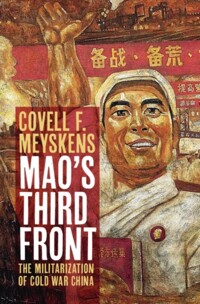
단행본
Mao's third front: the militarization of Cold War China
- 발행사항
- Cambridge, United Kingdom ; New York, NY : Cambridge University Press, 2020
- 형태사항
- 281 p. : 24 cm
- ISBN
- 9781108489553
- 청구기호
- 323.9 M616m
- 서지주기
- Includes bibliographical references and index
소장정보
| 위치 | 등록번호 | 청구기호 / 출력 | 상태 | 반납예정일 |
|---|---|---|---|---|
이용 가능 (1) | ||||
| 1자료실 | 00018639 | 대출가능 | - | |
이용 가능 (1)
- 등록번호
- 00018639
- 상태/반납예정일
- 대출가능
- -
- 위치/청구기호(출력)
- 1자료실
책 소개
In 1964, the Chinese Communist Party (CCP) made a momentous policy decision. In response to rising tensions with the United States and Soviet Union, a top-secret massive military industrial complex in the mountains of inland China was built, which the CCP hoped to keep hidden from enemy bombers. Mao named this the Third Front. The Third Front received more government investment than any other developmental initiative of the Mao era, and yet this huge industrial war machine, which saw the mobilization of fifteen million people, was not officially acknowledged for over a decade and a half. Drawing on a rich collection of archival documents, memoirs, and oral interviews, Covell Meyskens provides the first history of the Third Front campaign. He shows how the militarization of Chinese industrialization linked millions of everyday lives to the global Cold War, merging global geopolitics with local change.
An examination of how economic development and everyday life intersected with the temperature of Cold War geopolitics in Mao's China.
An examination of how economic development and everyday life intersected with the temperature of Cold War geopolitics in Mao's China.
목차
Introduction; 1. The coming of the third front campaign; 2. Good people and good horses go to the third front; 3.Concentrating forces to wage wars of annihilation; 4.Produce first and consume later; 5.Industrial development amid cold war insecurity; Epilogue. The demilitarization of chinese socialism; Appendix. Third front demographics
